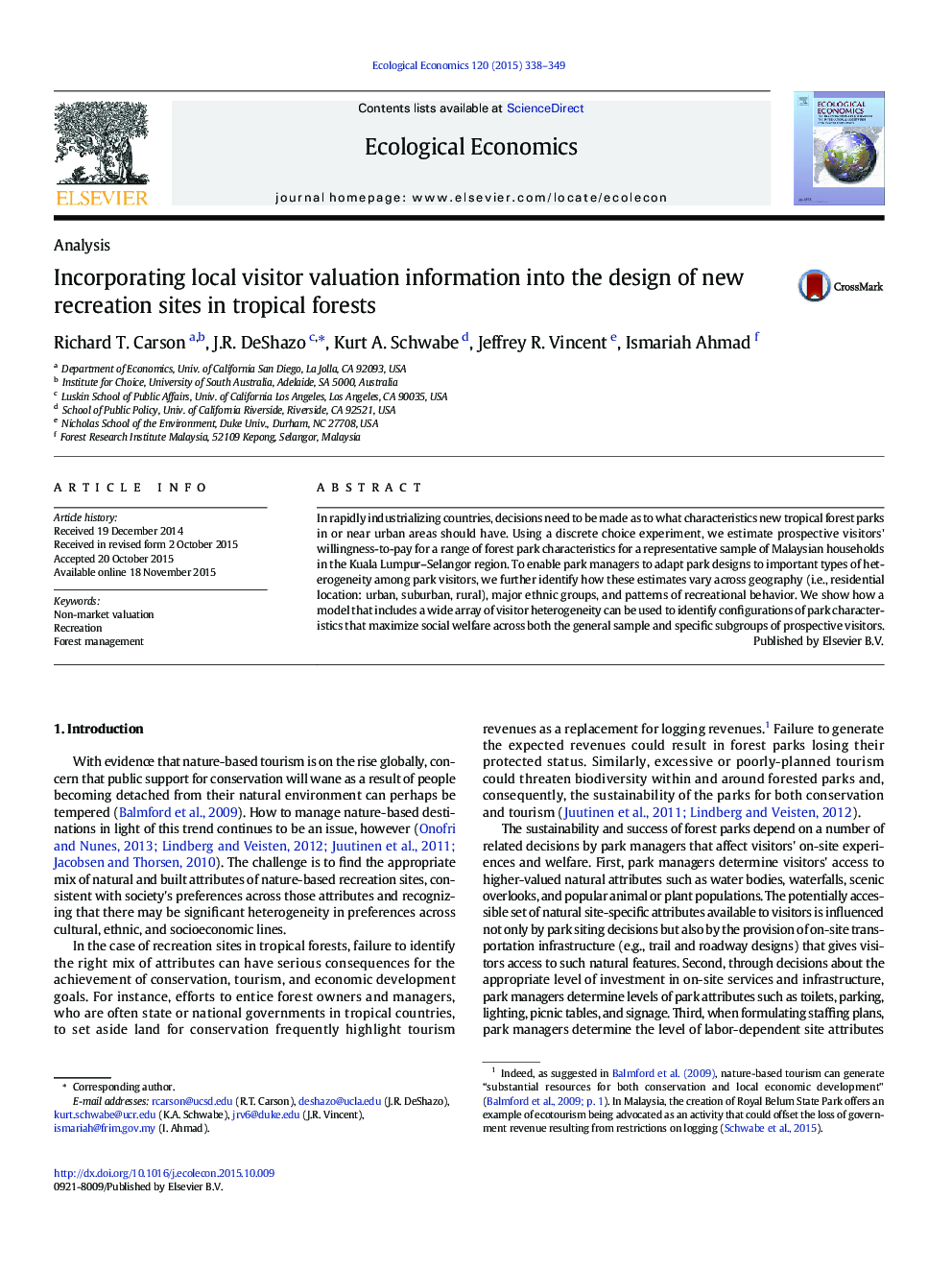| Article ID | Journal | Published Year | Pages | File Type |
|---|---|---|---|---|
| 5049210 | Ecological Economics | 2015 | 12 Pages |
In rapidly industrializing countries, decisions need to be made as to what characteristics new tropical forest parks in or near urban areas should have. Using a discrete choice experiment, we estimate prospective visitors' willingness-to-pay for a range of forest park characteristics for a representative sample of Malaysian households in the Kuala Lumpur-Selangor region. To enable park managers to adapt park designs to important types of heterogeneity among park visitors, we further identify how these estimates vary across geography (i.e., residential location: urban, suburban, rural), major ethnic groups, and patterns of recreational behavior. We show how a model that includes a wide array of visitor heterogeneity can be used to identify configurations of park characteristics that maximize social welfare across both the general sample and specific subgroups of prospective visitors.
